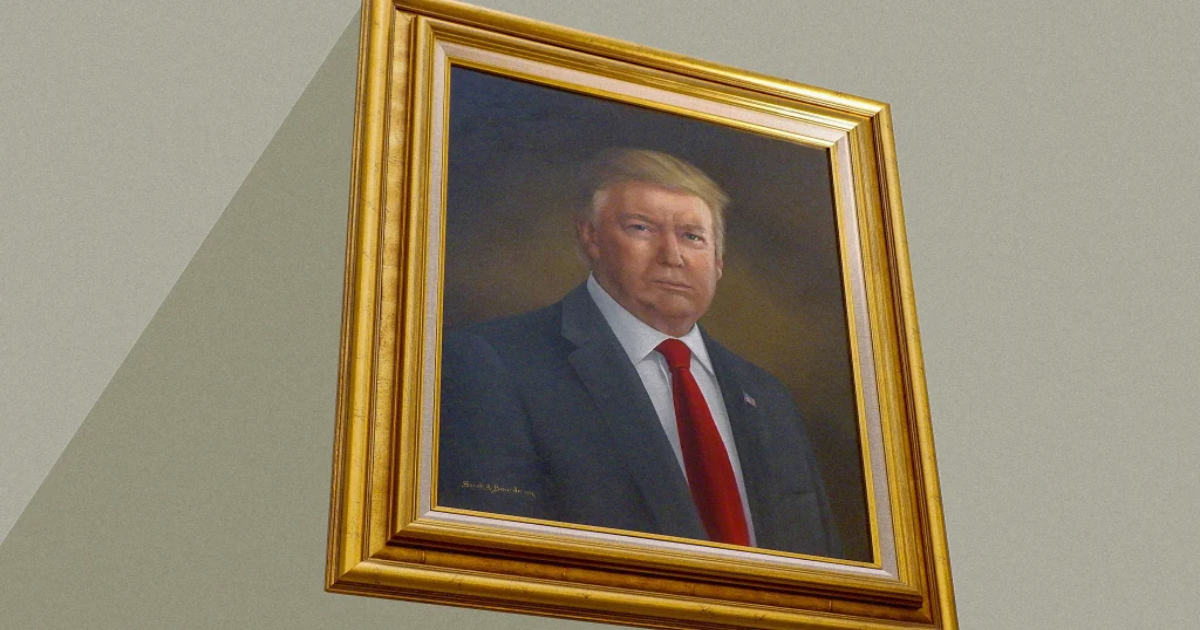War is raging in the Middle East, peace is uncertain in Europe, and investors and consumers are responding to threats of tariffs with sell-offs and boycotts. But President Donald Trump is focused on what matters to him: his self-image.
Like a friend asking you to untag them from a photo on social media that they find unflattering, Trump isn’t happy with an artist’s depiction of him—and wants the painting taken down.
“Nobody likes a bad picture or painting of themselves,” Trump wrote in a social media post Sunday about the painting, which was added in 2019 to a collection of presidential portraits at the Colorado State Capitol building in Denver. He claimed the portrait “was purposefully distorted to a level that even I, perhaps, have never seen before.”
The portrait was painted by Sarah Boardman, a Colorado Springs artist who told the Denver Post in 2019 that she painted both Trump’s and former President Barack Obama’s portraits to appear intentionally apolitical. Boardman did not respond to a request for comment.
“In today’s environment, it’s all very upfront; but in another five, 10, 15 years, he will be another president on the wall,” Boardman said at the time. “And he needs to look neutral.”
It’s unclear why Trump is complaining about the portrait now, six years after it was first displayed. But Trump’s aversion to his portrait is actually human nature. Scientists have found that humans tend to dislike photographs of themselves for two primary reasons: One, humans prefer images of themselves that they see often—say, their face in a mirror. A portrait or a photograph that depicts a person from an unfamiliar perspective can lead to feelings of discomfort.
Then there’s the phenomenon of “self-enhancement,” which describes the tendency to evaluate our “own traits and abilities more favorably than is objectively warranted.” According to a paper published in the Society for Personality and Social Psychology, when presented with two images—one untouched photograph and one enhanced for attractiveness—respondents tended to identify with the enhanced photo. In other words, we tend to think we look better than we actually do.
This is almost certainly what’s going on in this case. After working in the public eye for decades as a celebrity, reality-TV-show host, and politician, Trump is particularly attuned to his appearance. But he also takes great pains to control his image. He—and his supporters—are not shy about altering imagery to depict him in an artificially flattering light. Trump likes images of himself that show him as strong. And he likes images that he can approve (see his official White House portraits).
Boardman’s painting violates all of Trump’s preferences: the soft-focused lighting, the jawline, the swept-over hair. Boardman’s portrait makes Trump look like just another guy in a blue suit—and he can’t stand that.
The final deadline for Fast Company’s Best Workplaces for Innovators Awards is this Friday, March 28, at 11:59 p.m. PT. Apply today.
Hunter Schwarz is Fast Company contributor who covers the intersection of design and advertising, branding, business, civics, fashion, fonts, packaging, politics, sports, and technology.. Hunter is the author of Yello, a newsletter about political persuasion More
